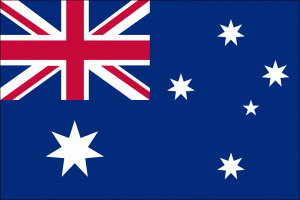 Excerpt from Competition Policy Review, Draft Report, September 2014, published under a CC-BY license. The review is being conducted by a panel chaired by Professor Ian Harper. It is accepting comments until November 17, and will issue a final report by March 15. The full draft report (and instructions for comments) is available here. The excerpt below is from pages 87-88.
Excerpt from Competition Policy Review, Draft Report, September 2014, published under a CC-BY license. The review is being conducted by a panel chaired by Professor Ian Harper. It is accepting comments until November 17, and will issue a final report by March 15. The full draft report (and instructions for comments) is available here. The excerpt below is from pages 87-88.
For individual countries, the optimal design and level of IP rights depends on the extent to which they are net importers or exporters of different forms of IP. Australia is a net importer of IP.[45] With trade and commerce-related aspects of IP crossing national borders, IP has been the subject of international treaties. Frameworks influencing Australian IP law and trade and commerce in IP both within Australia and internationally, include:
- the Agreement on Trade-Related Aspects of Intellectual Property Rights
- treaties administered by the World Intellectual Property Organization;
- other dedicated IP agreements falling outside the World Intellectual Property Organization’s framework; and
- IP provisions included as part of bilateral and regional trade agreements.[46]
As a net importer of IP, and likely to remain so, our ability to access IP protected by rights granted in other countries will be important to ensure that Australia can reap the benefits of the digital economy. That said, it is also important that commitments regarding the extent of IP protection in Australia are based on the best interests of Australians and these should be established through an independent cost-benefit analysis.
The ACCC (ACCC Submission 1, page 65), the PC (page 28) and The Australia Institute (page 20) argue that caution should be exercised when entering international treaties or agreements that include IP provisions. As the PC notes, the proposed Trans-Pacific Partnership Agreement between Australia and various other countries including the US, as well as other proposed international agreements such as the Transatlantic Trade and Investment Partnership are specifically considering intellectual property issues.(page 28)
The PC suggests that Australia has likely incurred net costs from the inclusion of some IP provisions in trade agreements, pointing to analysis of extensions in the duration of copyright protection required by the Australia-United States Free Trade Agreement which imposed net costs on Australia through increased royalty payments.[47]
As Australia is, and will continue to be, a net importer of IP, these costs are potentially significant. It is important that trade negotiations be based on an understanding of the costs and benefits to Australia of proposed IP provisions. This should be undertaken in an independent and transparent way and prior to negotiations being concluded.
The Panel’s view
Given the influence that Australia’s IP rights can have on facilitating (or inhibiting) innovation, competition and trade, the Panel considers that the IP system should be designed to operate in the best interests of Australians.
Determining the appropriate extent of IP protection is complex. Given the complexity of the issues, there is a case for conducting an independent framework-style review of IP. The review should look at competition policy issues, new developments in technology and markets and international trade agreements.
In the majority of cases the granting of an IP right is unlikely to raise significant competition concerns. That said, IP rights, like all property rights can be used in a manner that harms competition. It is therefore appropriate that the use of IP rights be subject to the CCA.
Independent and transparent analysis of the costs and benefits to Australia of any proposed IP provisions in trade negotiations should be undertaken to inform international trade negotiations
—–
NOTES:
44. ACCC 2012, ACCC submission to the ALRC Copyright and the Digital Economy Issues Paper, page 5.
45. Productivity Commission 2013, Trade & Assistance Review 2011-12, page 77.
46. Productivity Commission 2013, Trade & Assistance Review 2011-12, page78.
47. Productivity Commission 2010, Bilateral and Regional Trade Agreements.




